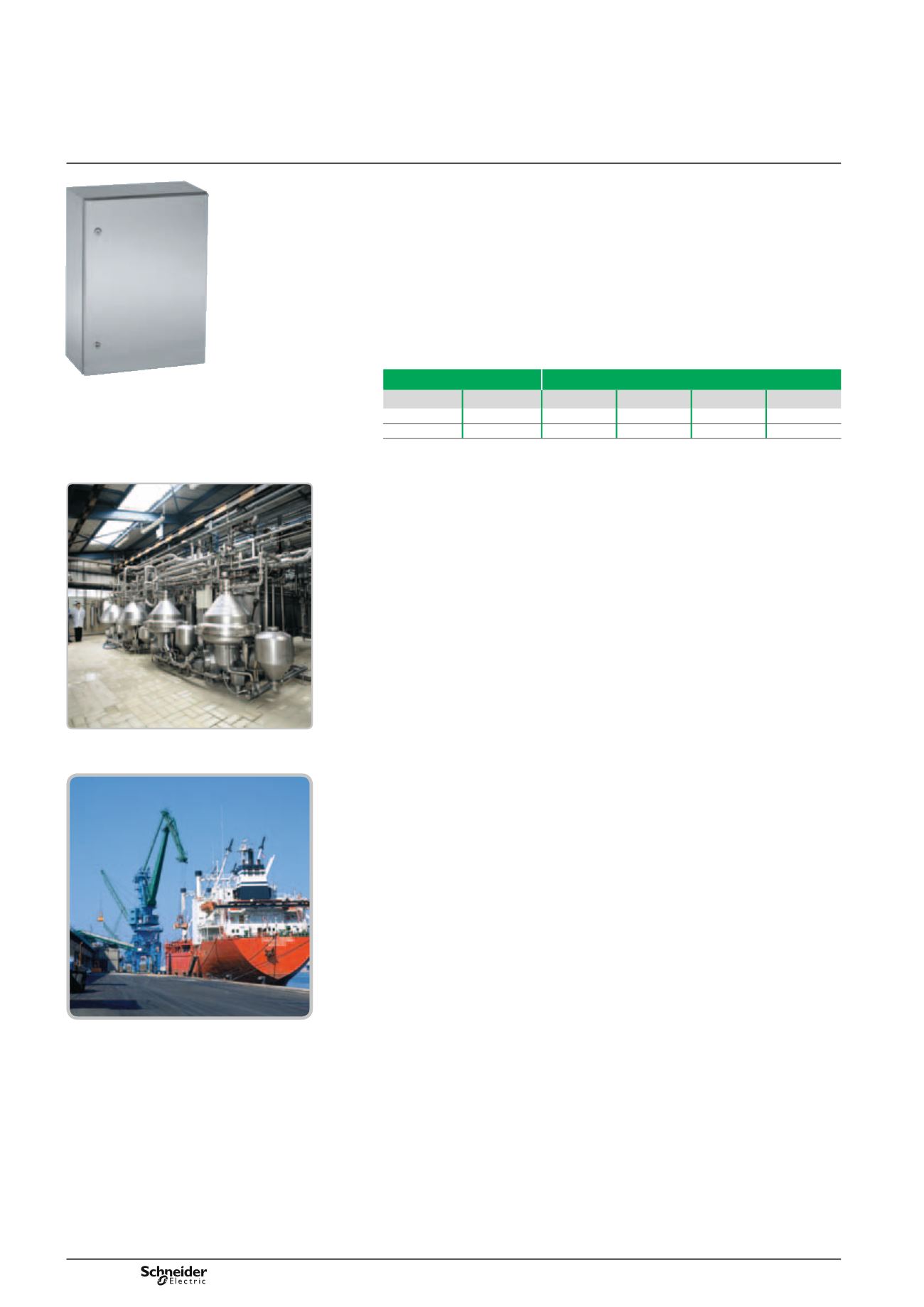

122
PB501231
PB501230
PB501229.eps
Spacial S3X
Stainless-steel wall-mounting
enclosures
Introduction
What is stainless steel?
How is the stainless steel grade determined?
These enclosures have been specially designed for the chemical, oil and food
and beverage industries, among others, which are particularly demanding in
terms of hygiene and resistance to corrosion.
Thanks to an elaborate composition
b
b
The following table shows the percentages of the main alloy elements that make
up stainless steels. The resistance of the material to aggressive agents in the
environment depends mainly on these alloys.
Choosing a stainless steel grade
AISI 304L stainless steel
(known as food and beverage stainless steel)
The most commonly used type in the food and beverage industry for its
resistance to corrosion and easy cleaning.
b
b
Prevention against corrosion, especially in the presence of organic acids.
b
b
Resistance to the action of nitrous gas in the presence of condensation water
and in most aggressive environments.
AISI 316L stainless steel (known as marine stainless steel)
Recommended in salty or chlorinated environments due to its very high
resistance to corrosion thanks to the presence of molybdenum.
b
b
Improved resistance to corrosion.
b
b
Particularly well adapted to environments charged with acidity, bromine and saline
halides or which use very corrosive additives and solvents.
Stainless-steel type Chemical composition (%)
AISI grade N. Europe Carbon
Chromium Nickel
Molybdenum
304L
1.4307
< 0.03
17 - 19
8 - 10
0
316L
1.4404
< 0.03
17 - 19
10 - 13
2 - 2.25


















